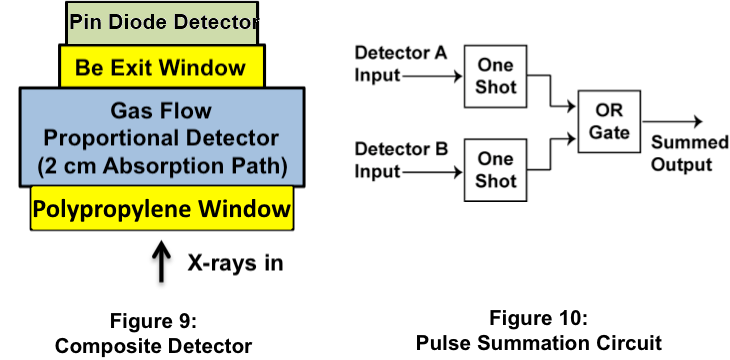Here's a schematic drawing of a tandem detector system (from one of our NSF instrument development proposals from a couple of years ago), that I think would be very useful to improve the energy range and sensitivity for WDS spectrometers in EPMA:

Please note that there is nothing new with the idea. We've seen this idea implemented in the distant past with Peak spectrometers for example. Using new solid state technology this tandem method should be even more efficient than previous efforts.
Here's a mention of this tandem detector idea from a Bruker guide to XRF:
The flow counter is situated inside the spectrometer chamber and has an angle range of 2° to 148°. Located behind the flow counter and outside the chamber, separated by a 0.1 mm Al foil, is the scintillation counter with an angle range of 2° to 110°. Both detectors can be used individually or in tandem. In tandem operation, the intensity in the flow counter is measured as well as the radiation that passes through the flow counter and the radiation that is absorbed by the scintillation counter.
http://www.fem.unicamp.br/~liqcqits/facilities/xrf/%5BBruker_2006%5D%20Introduction%20to%20X-ray%20Fluorescence%20(XRF).pdfOf course we probably shouldn't use a scintillation counter as described in the XRF guide above, because today's pin diode detectors are highly efficient and low cost. In addition, unlike SDDs, pin diode detectors don't need to be cooled.
Also the 127 um thick Be exit window provides a nice low energy filter for the pin diode. That is, only x-rays greater than 6 keV or so will get detected, while the gas flow portion of this tandem design will very efficiently detect low energy x-rays down to Be or possibly lower.
If this tandem design was implemented, every WDS spectrometer on your EPMA instrument could capture the complete x-ray energy range!